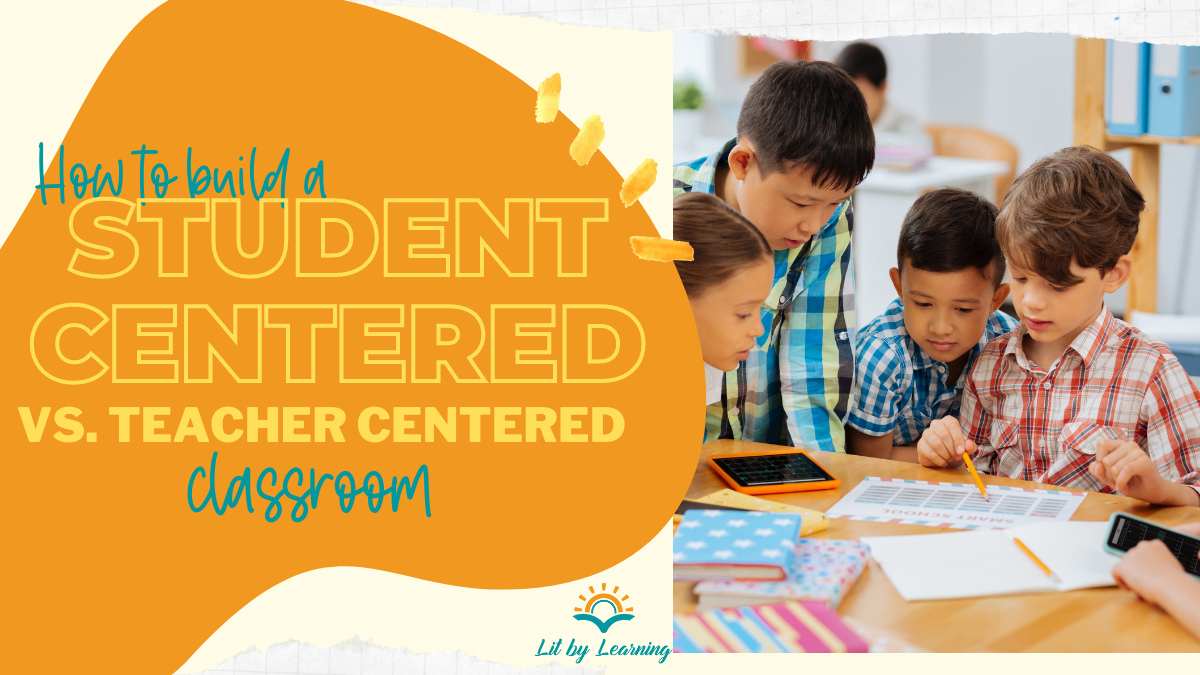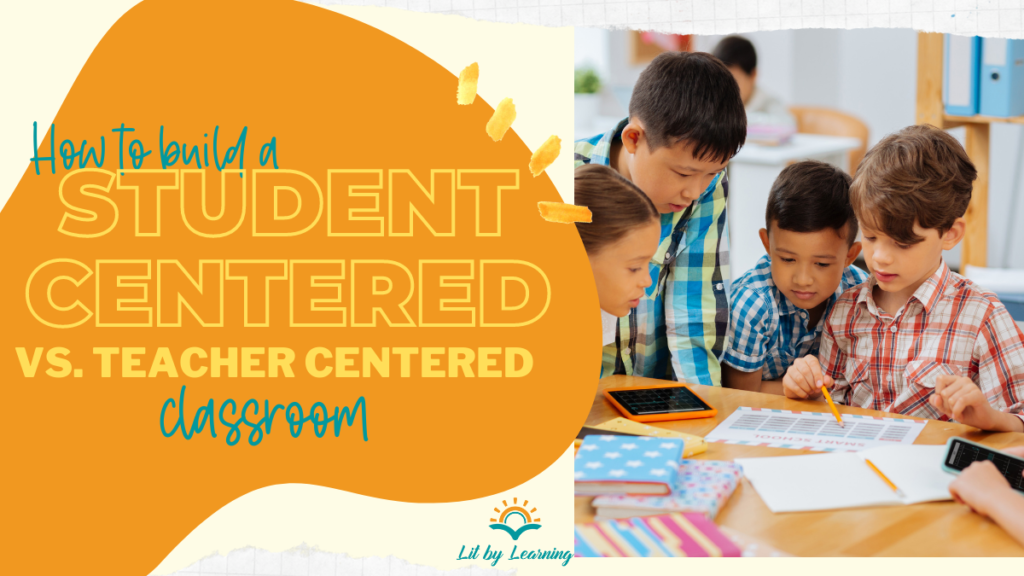
Anyone who’s been in the education field for more than a hot second knows that we love our buzzwords. There is enough educational jargon out there to make anyone’s head spin and the best/worst part is that there are rarely clear, agreed-upon definitions for any of them. Raise your hand if you’ve done the classic “nod knowingly, but then run to google later” maneuver. *Raises hand*.
Aside from the hot ticket of Critical Race Theory (CRT) – which I’ll leave to another post- one of today’s most popular terms is “student centered.” But what does it actually mean to be teacher centered vs student centered? What are strategies for and examples of student centered learning? I hope this article is helpful in clearing up this overused word – and giving you some ideas about how to put your students at the center this school year!
What does student centered mean?
As we return to school in the fall, many thoughtful educators are wondering: “What is student centered approach?” and “How does being student centered connecting with having building equity in the classroom.
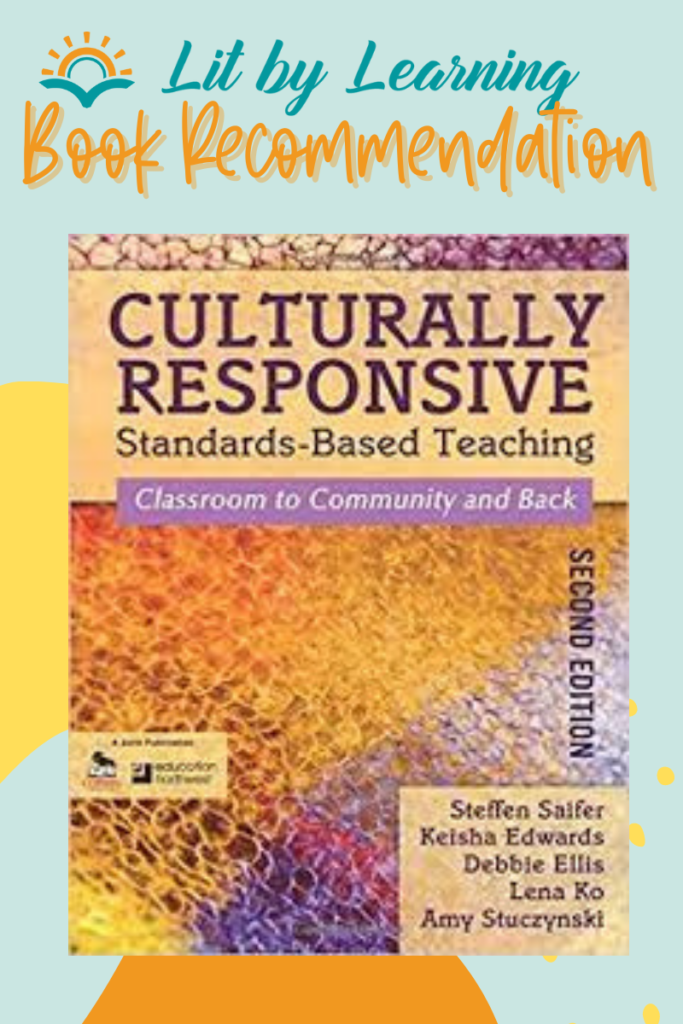
Being “student centered” is one of the 6 main tenets of Culturally Responsive Standards-Based (CRSB) Teaching. According to the authors of Culturally Responsive Standards Based Teaching, being student-centered means:
- Students take center stage when determining what they will learn and how they will learn it
- Students’ lives – and all they include – are at the center of what is being taught
- The varying strengths of students are actively recongized and taken into account when forming customized learning plans
- All instruction is built on the students’ strengths (vs. deficits)
From a different lens, being student-centered or learner-centered can also mean ensuring that the students – rather than the teachers – are the main voice in the classroom. It flips the traditional model (I do, We do, You do, anyone?) on its head and requires students to be the leaders of their own learning.
Teacher Centered vs Student Centered Classrooms
We get the idea in theory, but what does it look like in practice? The chart below helps to define what a student centered classroom looks like in real life:
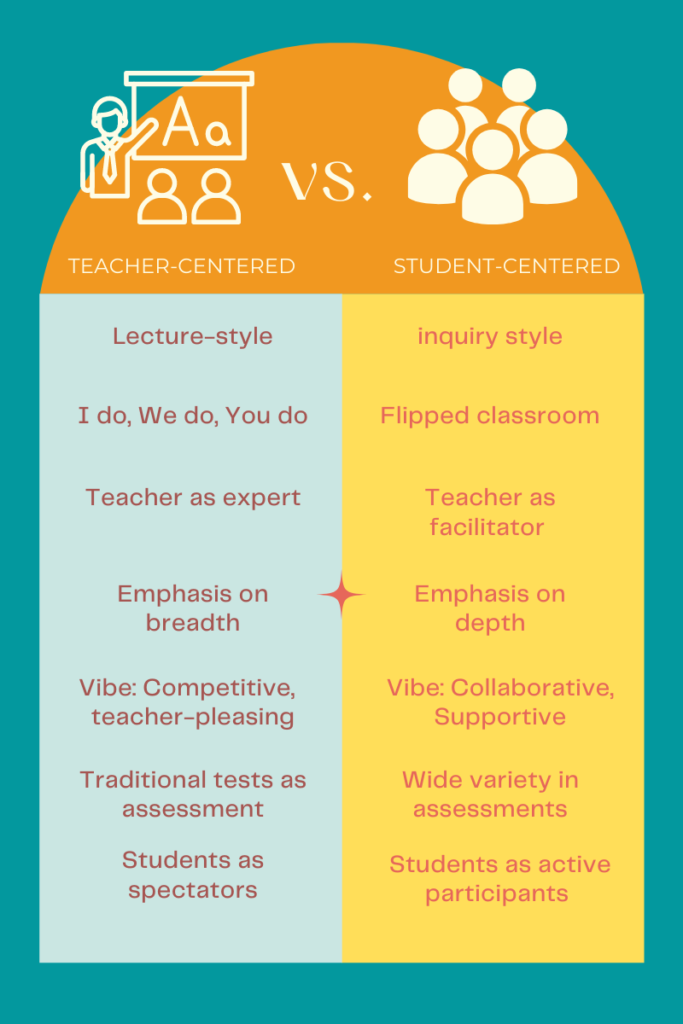
As you examine this chart, reflect upon your own teaching practice and think:
- What are you already doing that is student centered?
- What aspects of your classroom are teacher centered?
- How could you build equity in your classroom this school year?
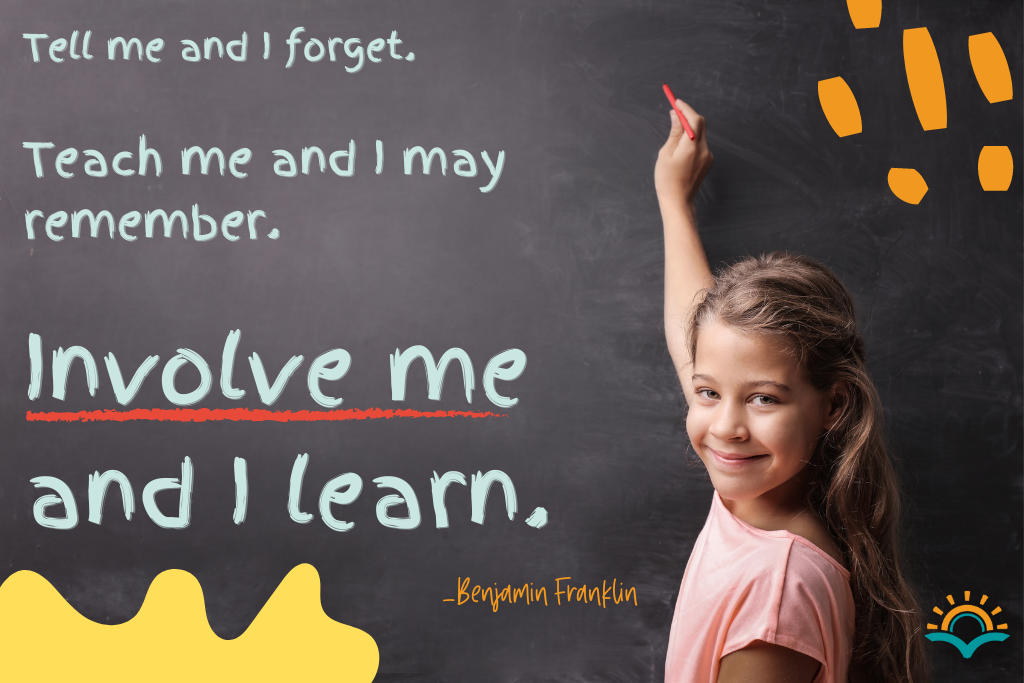
3 strategies for student-centered learning from beginning of the school year – and beyond!
As we return to school in the fall, it is a great chance to shift some practices towards being more student centered. To kick things off right, I recommend that you…
Co-create Classroom Expectations
- I don’t know about you, but I don’t love following rules for rules’ sake. It feels forced, I feel belittled – and I kind of feel challenged to break them, just because I can. (Do you all want me as a student in your classes?) It’s the same way with kids: walking in on Day 1 with a set of posted rules is… deflating AND clearly shows that the teacher is in absolute charge of the space (teacher centered). Instead of you creating the rules, co-create the rules together. Stick with me, here. I have taught Pre-K through 5th grade and ALL students were able, with the right level, of support, to create a list of expectations for our classroom. Here are the magic 4 questions that I use:
- How do you want me (teacher) to treat you (students)?
- How do you want to be treated by other students?
- How do you think I (teacher) want to be treated by you?
- How do you want to be treated when there is a problem?
Using this protocol, we create a shared list of adverbs (kindly, nicely, gently) and adjectives (calm, good, smart) to describe our ideal classroom. We then look at the list and look for trends: which words do we see over and over again? We whittle these down to 3-5 keywords that we use to build our positively stated expectations. Pro tip: ensure that at least one of your expectations is about bodily safety (ie: We keep our bodies to ourselves). Once we have our 3-5 expectations, when then do another round of brainstorming, asking:
- What will this LOOK like?
- What will this SOUND like?
- What will this FEEL like?
This process of using students’ ideas and language to co-create expectations as soon as we return to school will help students feel at the center of their learning space. Our classroom community ends up with a manageable set of co-created expectations that we all understand deeply. We can refer to it at any time as inevitable classroom conflicts arise!
Learn about your students – deeply.
I’ve yet to meet an elementary teacher who doesn’t do some kind of get-to-know-me activity to start the year. Me-bags, All-About-Me pages, VIP — the idea is all the same: give students a chance to share their interests and favorites. This is great – and it is not enough to get to know students deeply. It’s also critical to know about students’:
- Culture
- Beliefs
- Struggles
- Former experiences with school
I find that these answers are easier to get through simply talking 1:1 with students – as opposed to asking them to write or share their answer with a big group. I walk around with my clipboard and try, as discreetly as possible, to take notes on whatever snippets I can pick up. For students who are slow to open up or with whom I struggle to build a connection, I secretly designate them as my own personal all-star for the day. I observe them from afar, taking notes on who they talk to, how they use free time, what makes them laugh, when they choose to answer class questions – basically, any information I can get.
Of course, students themselves are just one source of information; proactive teachers dedicated to really getting to know their students reach out to additional sources. This could be:
- Parents/guardians: See my post about 20 questions to ask parents as we return to school – or grab your ready-made digital parent survey here!
- Former teachers: Not so feasible with all 20? 25? 30? Students under your care, but most teachers have a great radar for who might need a little extra support. Reaching out to their former teacher(s) – something as simple as what worked? What didn’t work? – ensures that you’re not starting at Level 0.
Co-Create your space with students
Co-create your space with students: I put this one last, because I KNOW I’m going to get some pushback about it. Here it goes: Resist your color-coding, theme-loving, prep-to-the-max urges so that students can co-create your physical space with you. You heard me, people: I’m talking minimal decorations up, empty bulletin boards – not even (permanent) name tags on the desks. The more that students can see themselves – their identities, their ideas, their work, their families – in their learning space, the more student-centered it will be. If you have funds set aside for classroom materials or decoration, work with students to decide how to spend it. Simply put: instead of making your classroom look exactly how you like it (teacher centered), invite students to make it how they like it (student centered).
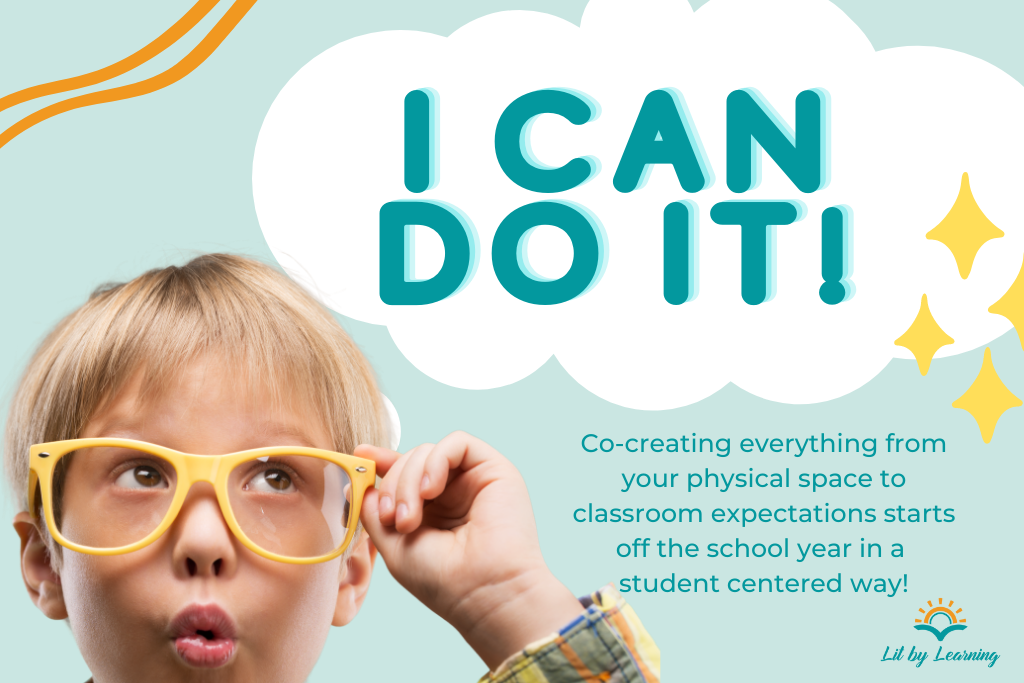
Just the start of student centered learning!
These ideas are excellent ways to start your school year in a student centered way, but this is only the beginning! For many more ideas of how to make your classroom student centered vs teacher centered, check out these articles – and stay tuned for future blog posts!
- This Edutopia article explains how a truly student-centered classroom begins with a thoughtful teacher.
- This EdWeek article has more tips and tricks to create a student-centered classroom!

